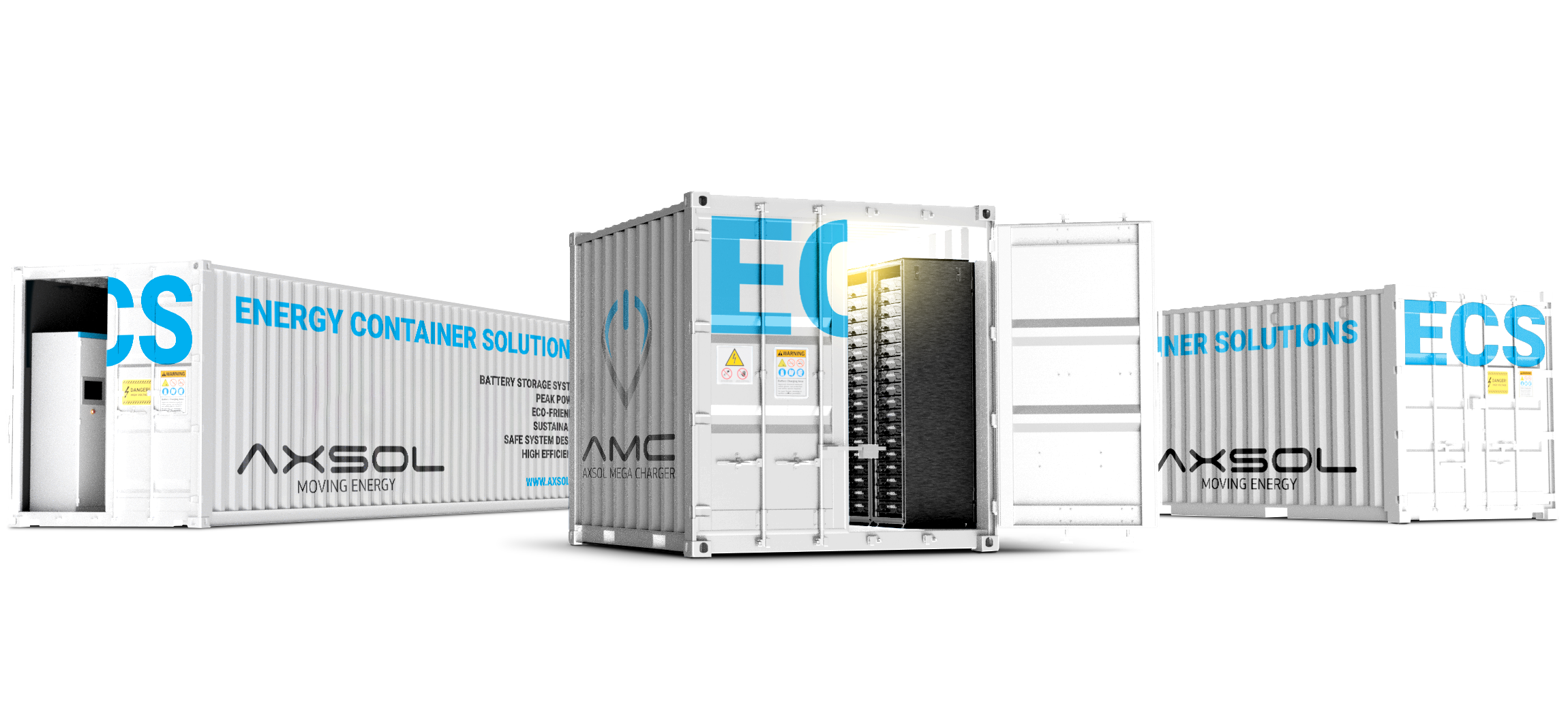
The charging power of battery-powered cars continues to increase with newer models. Most cars today charge with 7 to 22 kW AC, but there are also newer models that charge with over 300 kW. Despite equally large batteries, this shortens the charging time and increases the attractiveness of the green mobility vehicle.
The charging capacity of battery-powered cars continues to increase, so that newer models can charge with over 300 kW. This shortens the charging time and makes green mobility more attractive.
With the AXSOL Mega Charger, AXSOL presents its own modular solution for flexibilising the charging infrastructure for e-mobility. The charging electronics are simply integrated into an AXSOL Energy Container Solutions container with its battery storage modules. The battery storage modules buffer the power from the grid and ensure that the desired charging power is available for all connected charging columns at any time without burdening the grid.
With the AXSOL Mega Charger, AXSOL offers a modular solution for making the charging infrastructure more flexible. The charging electronics are integrated into an AXSOL Energy Container Solutions container with battery storage modules. The battery storage buffers the power from the grid and provides the desired charging power for all charging columns at all times.
| Use Case | Container | Connections | Recommended capacity |
|---|---|---|---|
| Fleet management | 1 x 40 feet | 4x 22 kW (AC) 4x 43 kW (AC) |
1.580 kWh |
| Supermarket | 2 x 20 feet | 2x 22 kW (AC) 4x 43 kW (DC) |
620 kWh |
| Employee parking (configuration A) | 1 x 40 feet | 10x 11kW (AC) 2x 22kW (AC) |
220 kWh |
| Employee parking (configuration B) | 1 x 40 feet | 6x 11kW (AC) 4x 22kW (AC) |
584 kWh |
| Public events | 2 x 20 feet | 8x 22kW (AC) 4x 150kW (DC) |
1.840 kWh |
| Infrastructure (gas stations) | 1 x 20 feet | 6x 150kW (DC) | 1.600 kWh |
Advantages


